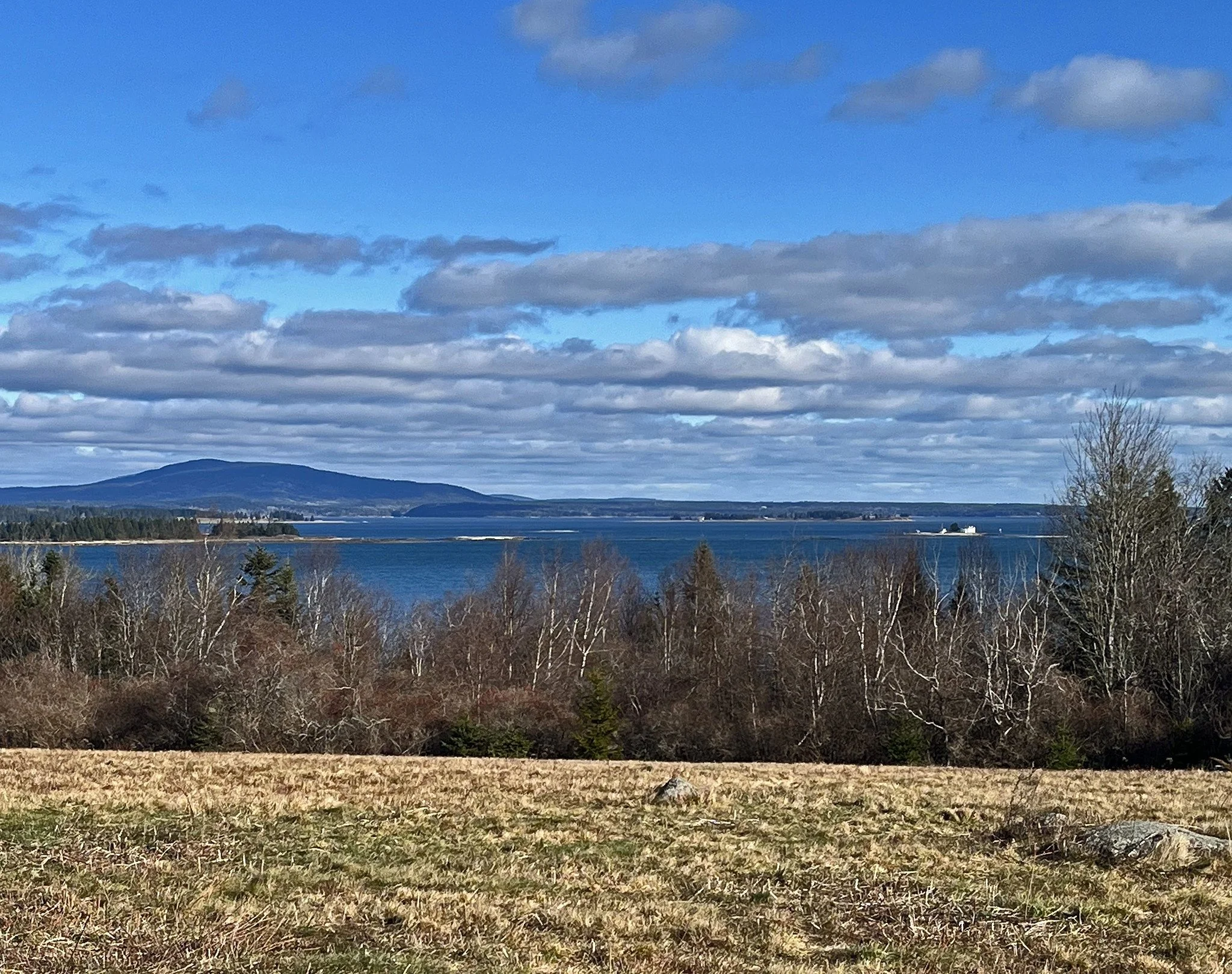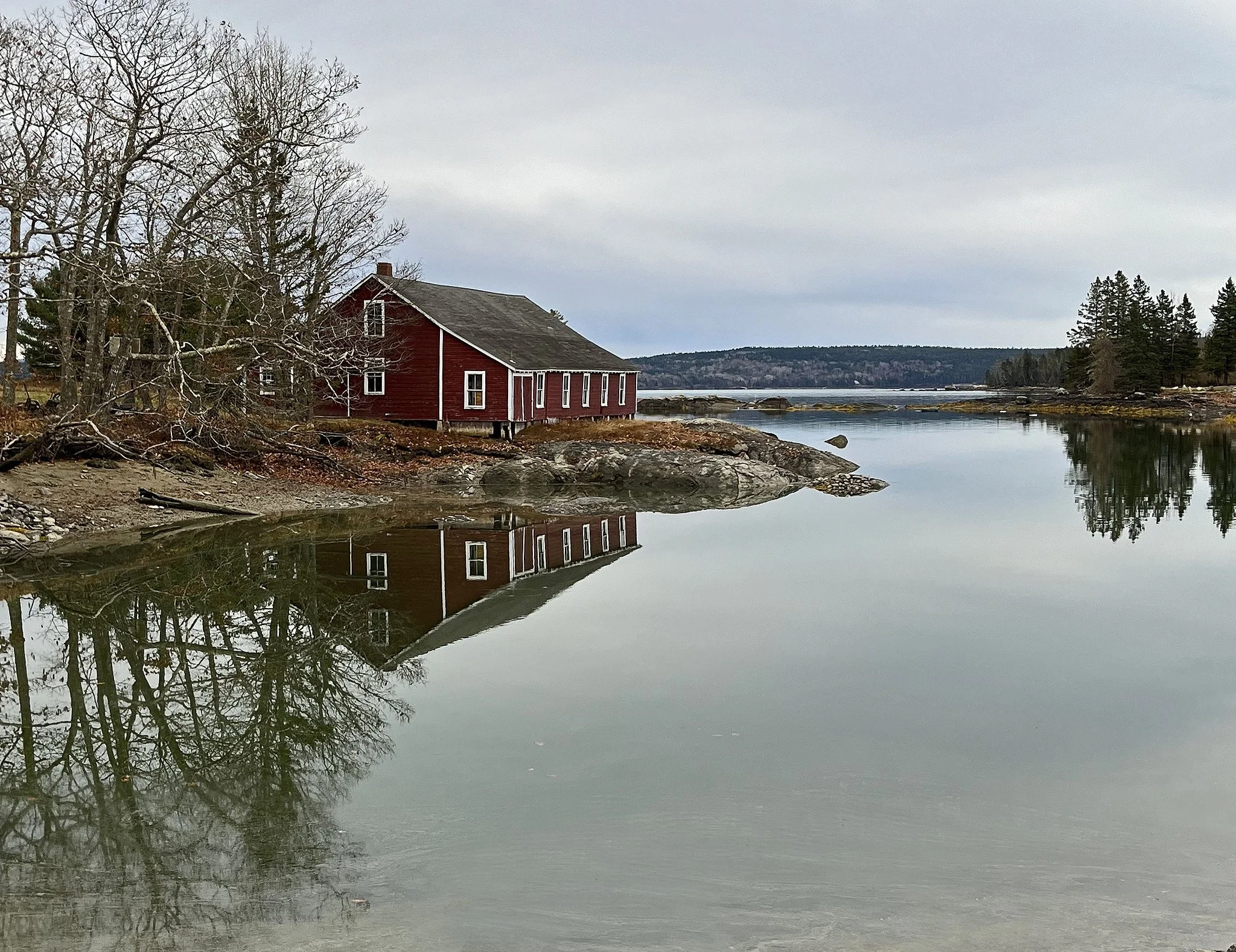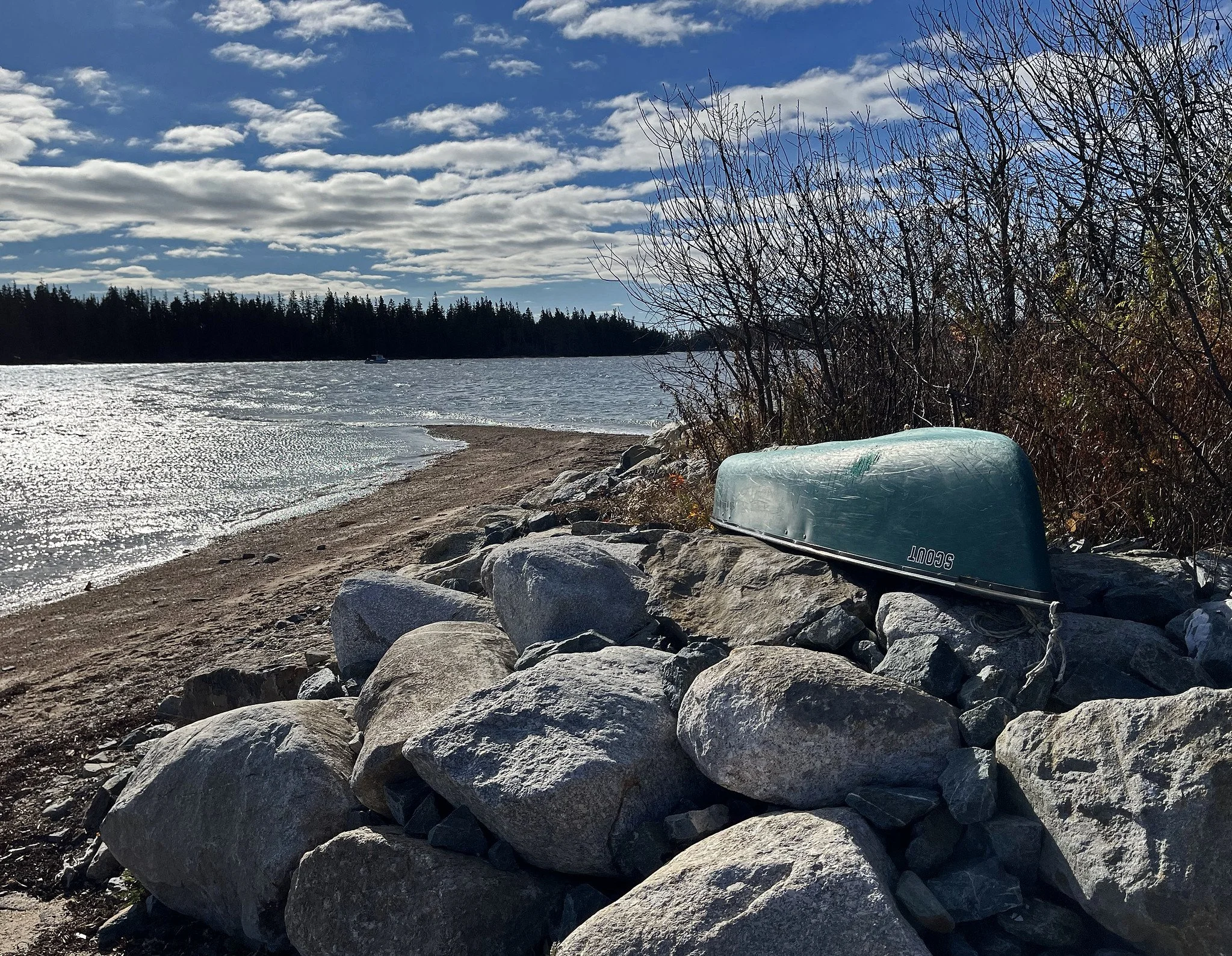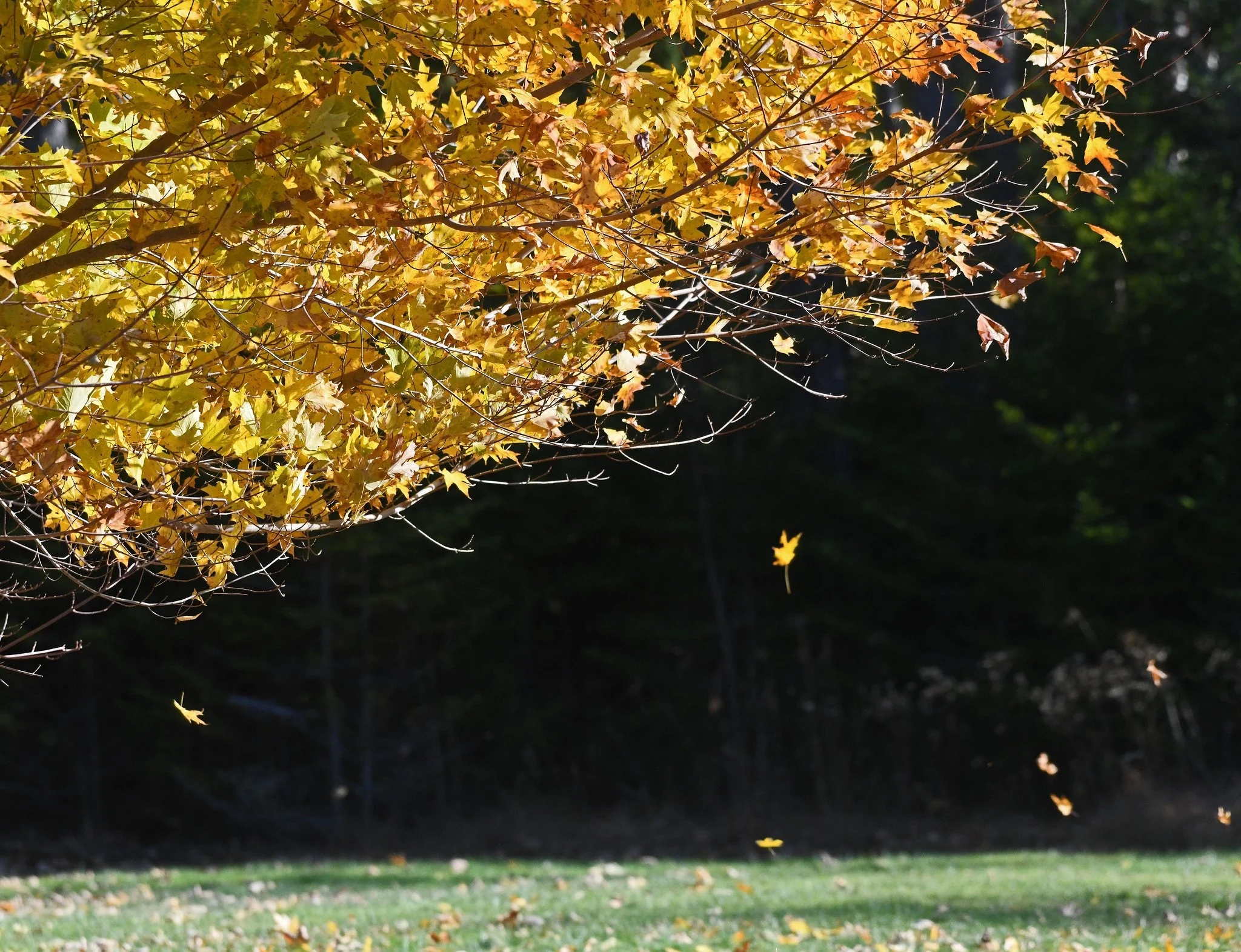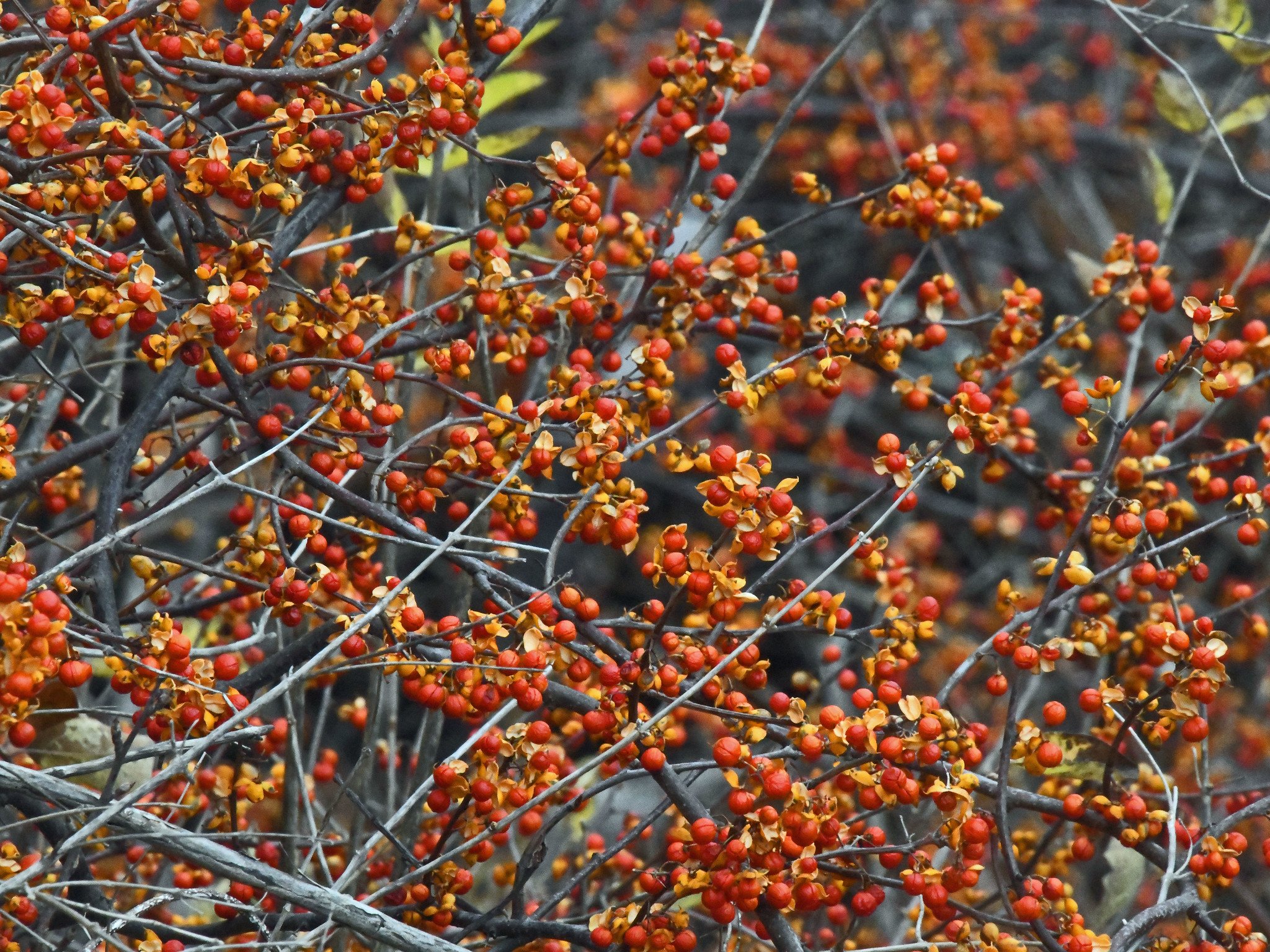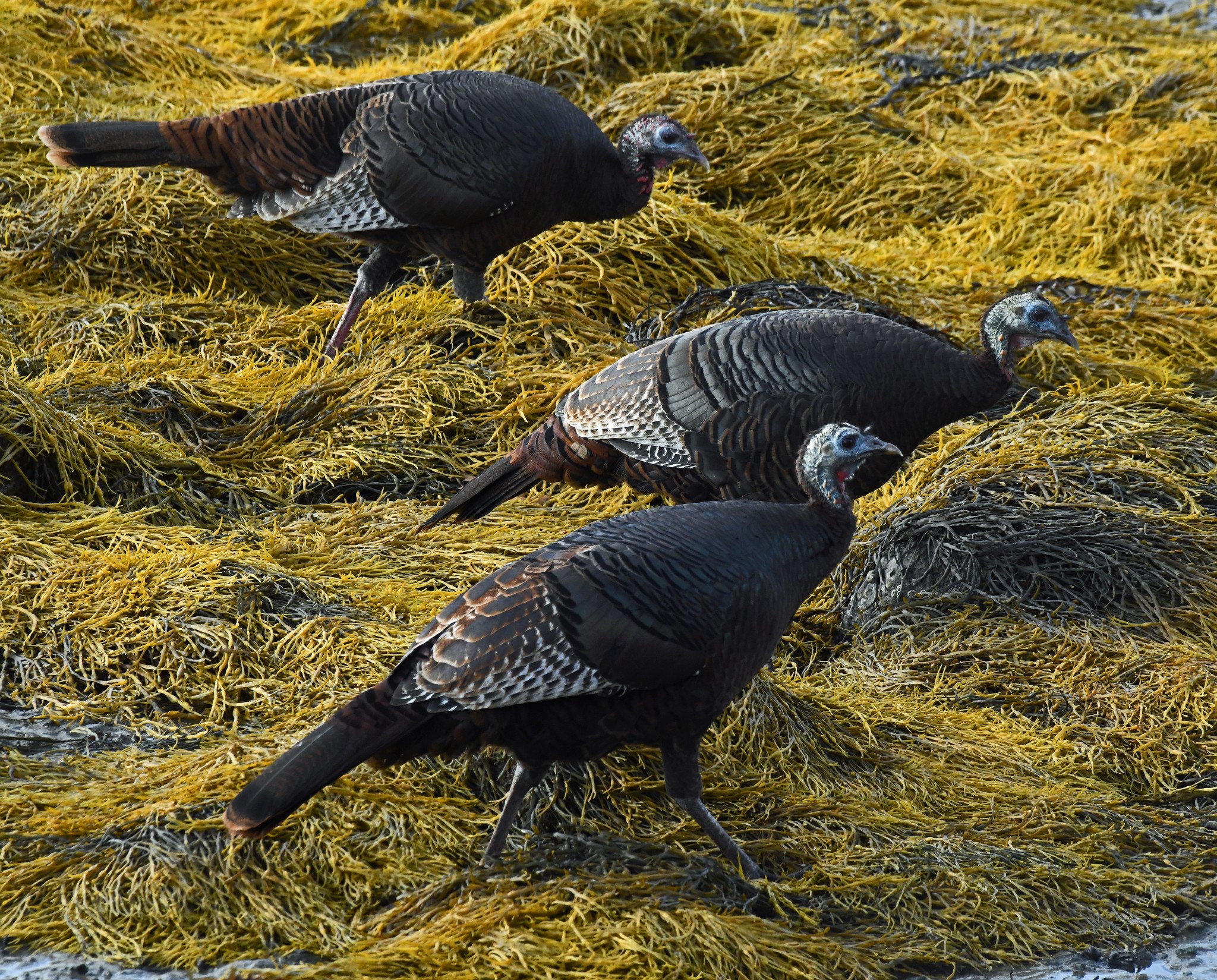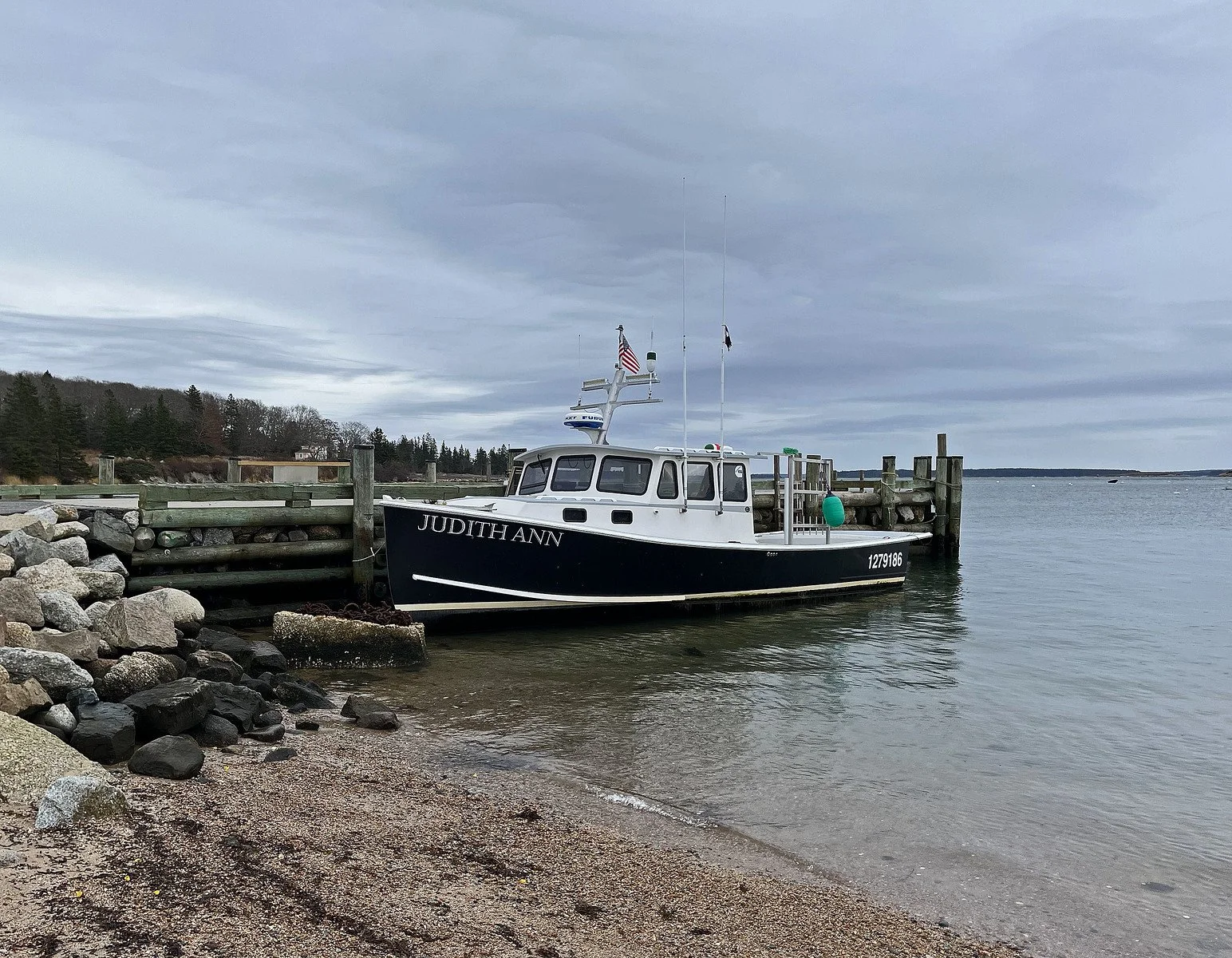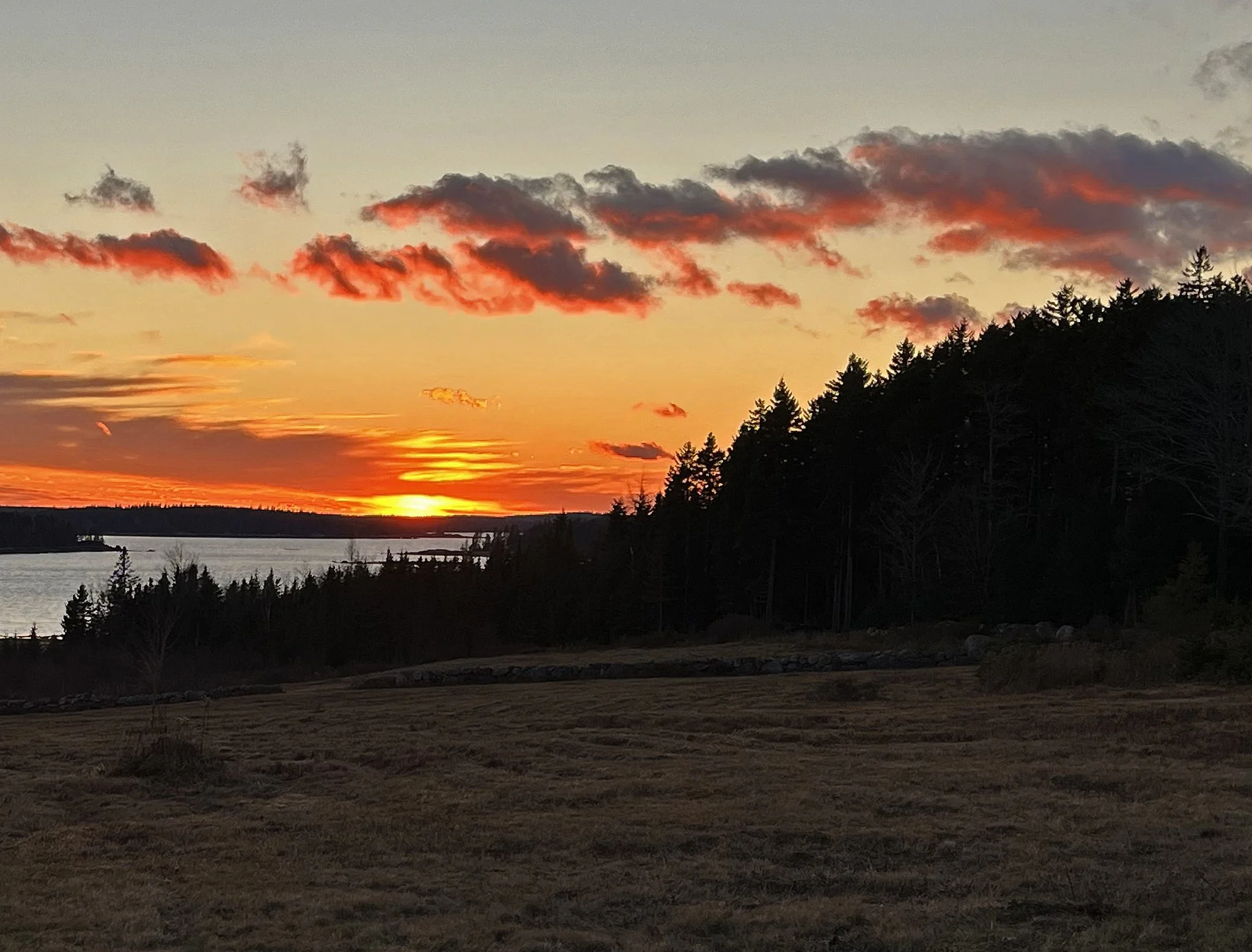November here is a fickle month weather-wise. She has trouble deciding if she wants to be sunny, rainy, snowy, foggy, frigid, warm, or combinations of these. This year, November was all of those, plus being part of an extraordinary dry spell that kept us in a moderate drought condition. Nonetheless, as with all months here, she was picturesque in her own way.
As usual, we’ll begin these Postcards with our monthly visits to the the four vistas that we write to friends about in all seasons and weather: Mount Desert Island, Maine’s largest island, as viewed from Brooklin’s Amen Ridge; the Harbor Island house in Brooklin’s Naskeag Harbor; the boathouse in Blue Hill’s Conary Cove, and Blue Hill, the almost-mountain with the Town at its base that it’s named after:
Continuing with the water motif, the ponds and wooded streams were low due to lack of rain, and the the sea tides were very low or very high due to the month’s supermoon and the occasional dramatic rain storms.
The dryness and absence of really violent winter storms in November delayed leaf-coloring and leaf-falling until late in the month. Much of November was Octoberesque. By the end of the month, however, most of the trees and bushes were virtually leafless (or, in the case of tamaracks [larches] needleless). The leaf loss exposed multiflora rose hips and winterberries for collecting as table arrangements, as well as the cruel beauty of Asian bittersweet fruit on its tree-strangling vines.
In the wildlife category, we have to honor our wild turkeys during the Thanksgiving month. Here on the coast, they’ll hunt for crabs in the rockweed and seeds along wooded trails.
Firearms hunting season for antlered white-tailed deer also starts here in November. (A special permit is needed to hunt “antlerless” deer.)
Meanwhile, the relative warmth of November tempted at least one great blue heron to delay or abandon his fall migrations and provided our red squirrels with plenty of easily-available winter food.
Wildlife of a much different kind are involved in November’s great transition on the working waterfront. Most coastal water lobster fishermen stop trapping those crustaceans, bring their traps in for storage during the month, and do what’s needed to wrap up that season.
The scallop-diving season also began in November. That’s for the relatively few divers who don underwater suits and breathing equipment and hand-harvest choice scallops from the sea bottom during the winter. Below you’'ll see the fishing vessel Tarrfish coming home to Naskeag Harbor with a load of scallops that its owner, David Tarr, dove for. As with many scallop fishermen, David sells part of his catches to friends and neighbors.
The scallop-dragging season begins December 2, which means that summer lobster boats are converted into winter scallop boats in late November. The vessels are equipped with masts and booms that maneuver their “drags” (metal-wood-and-rope dredges) that scoop scallops from the sea floor.
Of course, there are many working vessels that are brought ashore in November to begin their long winter vacation.
This year, Thanksgiving day was miserable with overcast, fog, and rain, and was not worthy of a “wish-you-were-here” Postcard. However, there were two monthly events that may be worth memorializing. The first was the Presidential election, which attracted a heavy voter turnout in rural Maine and may result in historic consequences.
The second event was a good winter moon that went through some interesting phases that culminated in the full moon, one of the year’s supermoons. The November full moon is known as the Beaver Moon because it occurs when — I should say it occurred at one time when — it was best to trap beavers before the ponds iced up.
Finally, but perhaps most promisingly, November is the first month that brings us the increasingly spectacular winter sunsets and dusk afterglows that come with the colder, clearer air and earlier darkness.
(All images in this post were taken in Down East Maine during November of 2024.)

